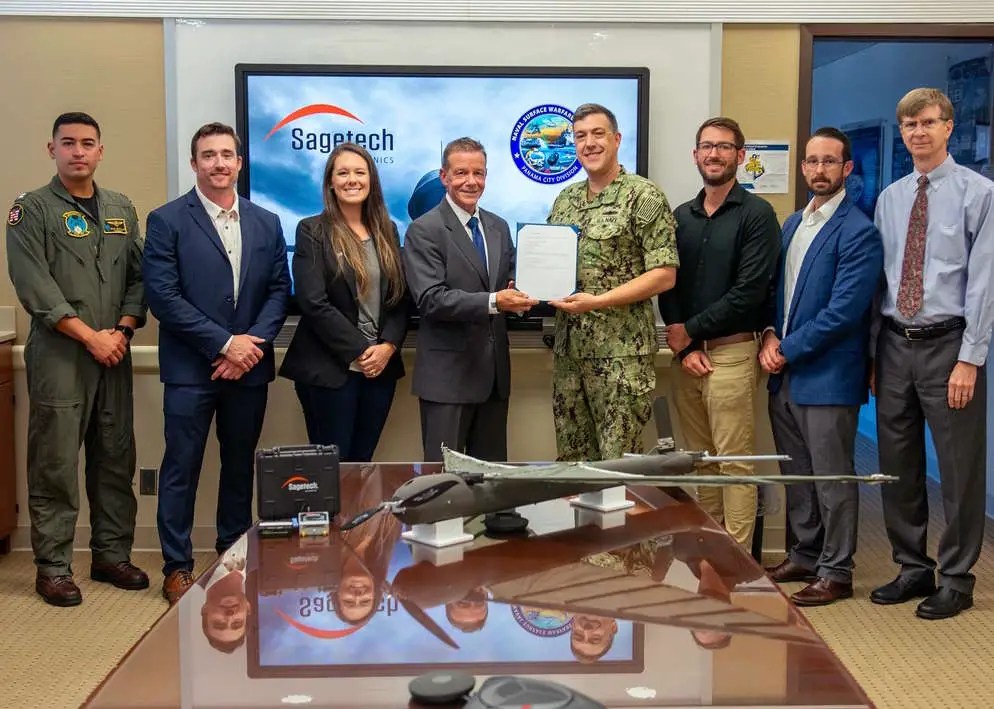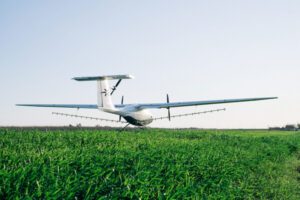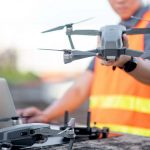How Far Can a Drone Fly?
Now that drones have become more commonplace for leisure use, we often think of them as gadgets for improving our photographic capabilities or even our chances of catching a whopper when we’re fishing. But, you may be asking, how far can drones fly 2023?
But the first unmanned aerial vehicles (UAVs) were developed during the First World War for military purposes. It wasn’t until the Vietnam War, though, that the US military began to use drones in a variety of roles. These included launching missiles and acting as decoys in combat.
Today, the military is still at the forefront of drone technology. But how far can a military drone fly? Keep reading to learn all about military drones and the amazing feats they can achieve.
How Far Can a Military Drone Fly?
The average range of a military drone depends on various factors. These include whether it is manned or unmanned and whether it is a rotorcraft or fixed-wing design:
Manned Military UAVs: Manned military fixed-wing UAVs have an average range of 3,417.5 miles (5,500 km). In contrast, manned military rotorcraft UAVs have an average range of 350 miles (563.3 km).
Unmanned Military UAVs: Unmanned military fixed-wing UAVs have an average range of 3,023.5 miles (4865.8 km). Unmanned military rotorcraft UAVs have an average range of 286.3 miles (460.7 km).
As we can see here, manned drones can fly farther than unmanned drones. When comparing different drone designs, it’s also apparent that fixed-wing models can fly much farther than rotorcraft UAVs.
Factors Impacting How Far a Military Drone Can Fly
Above all, the range of a military drone depends on how it’s built. This includes its design and the use it’s designed for. Here are six factors that impact the range of a military UAV:
Control Method
The control method is one of the most important factors in a drone’s range. Military UAVs use mobile or ground control stations (GCS) and data links for communication. This allows the operator to control and monitor the UAV from a distance.
Specific data links and frequencies allow for longer transmission distances and drones that can travel farther.
Payload
Military drones often have to transport fuel as well as sensors and cameras. A drone’s payload capacity and the power its propulsion system can generate are vital factors when determining how far it can travel.
Design
As we mentioned above when comparing fixed-wing and rotorcraft UAVs, the design of a drone has a huge bearing on how far it can fly.
Fixed-wing drones achieve most of their lift and propulsion through pressure differences in the air. The propellers on rotary-wing UAVs work in the same way but they use a lot more power to support the weight of the drone and keep it airborne. This is why rotorcraft design drones don’t usually have as much range as winged models.
Propulsion Method
The military uses several different propulsion systems for drones. These include batteries, solar energy, engines, fuel cells, motors, tethers, or a combination of these.
Each method has its pros and cons. For example, engines have very high energy outputs but need a lot of fuel–this adds weight to the drone and reduces its flight time and range. Batteries are reliable and lightweight but don’t provide the highest capacity, leading to a limit in flight time and range. And while tethers provide a drone with near-infinite endurance, they limit its range a great deal.
Size and Weight
This all comes down to aerodynamics. Military drones can range from nano drones weighing around 9 oz to large models weighing over 300 lbs. Larger, heavier drones have more drag and need more power to stay in the air.
Operating Altitude
The higher the altitude, the thinner the air. This is bad news for explorers wanting to scale Everest or explore Machu Pichu but great news for drones. Thinner air means less resistance and less fuel consumption for UAVs. As a result, drones that can reach higher altitudes can also fly much farther, faster, and longer than drones operating at lower altitudes.
How Long Can Military Drones Fly?
As we explained above, it’s difficult to answer the question, “how far can a drone fly?” without going into specifics. Since military UAVs come in all kinds of sizes, weights, and designs, there is no one size fits all response.
What we can be very exact about, though, is the record for the longest-flying military drone to date. That honor goes to the solar-powered Airbus Zephyr S, which managed to fly above the Sonoran Desert for 42 days in July 2022, breaking its own 2018 record for the longest uncrewed flight.
According to a US Army statement, the 2022 flight also saw the Zephyr achieve several other milestones. These include its first flight into international airspace, the longest continuous flight while controlled via satellite communications, and the farthest flight from its launch point.
How Fast Do Military Drones Fly?
Again, this varies depending on many of the same factors affecting a drone’s range. But the average speed of a military UAV, whether a fixed-wing or rotorcraft design is 256.6 mph (413 km/h).
How High Can a Military Drone Fly?
Military UAVs can go long distances at great speeds, but what about military drone altitude? As you might expect, military drones don’t have to follow the same rules as consumer drones when it comes to how high they can fly.
Consumer drones can only legally fly up to 400 feet in the US. In comparison, many military drones can fly tens of thousands of feet above sea level. For example, HALE (high altitude, long endurance) drones can travel up to 135 miles per hour at altitudes of up to 25,000 feet for more than 24 hours at a time.
The uppermost altitude for military drones stops around 50,000 feet, though. This is the maximum allowable altitude of two of the US Air Force’s most impressive drones–the MQ-20 Avenger and the Lockheed Martin RQ-170 Sentinel.
Your Guide to Military Drone Capabilities
If you’ve ever wondered “how far can a military drone fly?” or what kinds of altitudes military UAVs can reach, this guide should have answered all your questions and more.
That said, since drone technology is advancing all the time, it won’t be long before newer models are breaking these records and surprising us all with their awesome capabilities.
Want more drone news and tips? Get in touch with us today or join our community for regular updates!





